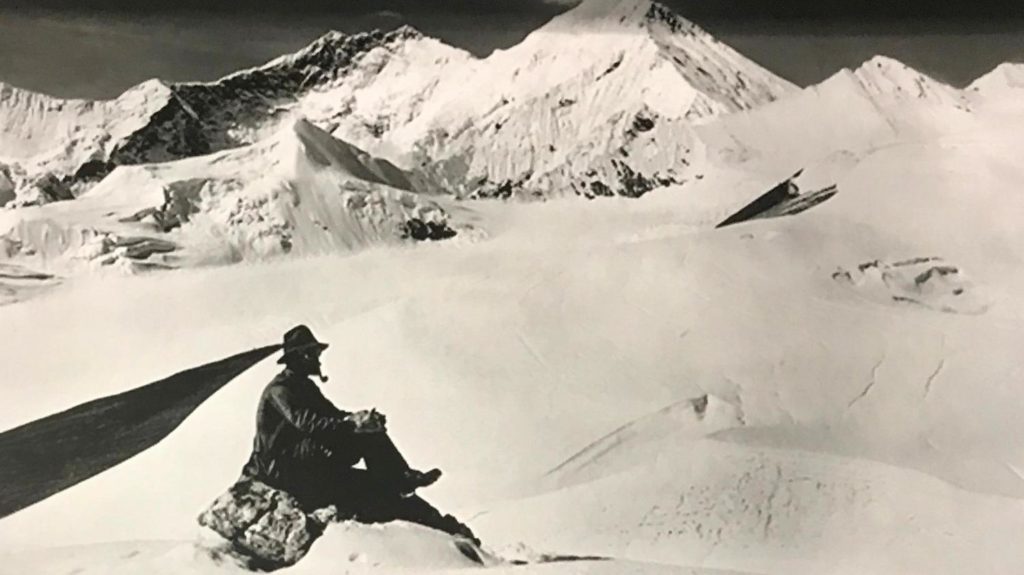By: Kristi Thomas Boyce
George Mallory was a mountaineer on the first three British expeditions to Mt. Everest. Known by Sherpas and Tibetans as Chomolungma, the peak became his final resting place for seventy-five years. In 1999, Conrad Anker famously found Mallory’s body on the North Face. He was perfectly preserved in permafrost—with climbing rope still on his waist.
Mallory’s words have been preserved just as well. His lyricism resonates through time, inspiring generations with proverbs like “It is not the mountain we conquer, but ourselves.” The three most immortal words in mountaineering are what he said to a journalist who asked “Why climb Everest?”
“Because it’s there.”
To some, this makes no sense at all. To others, it’s second nature. Courtney Dauwalter is one of the latter. She’s come to the highest reaches of ultramarathon running through the same primal sense of simplicity that drove Mallory to Chomolungma.
“In races, existence becomes so simple,” Dauwalter explained. “Your only focus is forward motion and everything that helps you keep doing that.” Saying this is one thing. Running for 280 miles is quite another.
Wasatch Mountain Arts is proud to celebrate Courtney Dauwalter with its 2020 George Mallory Award. A lifetime achievement award for adventure, this honor is conferred on people who push the boundaries of the human experience, redefining what we believe is possible.
In the last decade, ultramarathoning has exploded. The number of races listed across the globe increased 1000%, and in the process, starting lines grew from a tight-knit community of grizzled trail hounds to an exponentially crowded, competitive space. The winner of the inaugural Hardrock 100-Mile Endurance Race in 1992 was David Horton—a bespectacled professor of kinesiology who finished in 32 hours, 34 minutes. Twenty years later, it was Hal Koerner—a full-time, sponsored runner who finished nearly eight hours faster.
And then there’s Courtney.
Even in a sport where records are shattered year after year, Dauwalter is an exception. Last August, she toed the line at the crown jewel of ultrarunning: the Ultra-Trail du Mont Blanc (UTMB), a 106-mile race that loops through the Alps with nearly 33,000 feet of elevation gain. (Mt. Everest clocks in at 29,029 feet.)
It’s not uncommon for top runners to arrive weeks in advance. They want to acclimate to the elevation and study the terrain by running it. Dauwalter flew in three days 42 beforehand (just enough to get over jet lag) with a different frame of mind: “I figured it was 106 miles in Alps, and I was just going to keep following the loop until it brought me back to Chamonix”.
She rolled up to the most competitive and neurotically analyzed ultramarathon in the world like it was a Thanksgiving turkey trot.
Not only did Dauwalter take first place among women, she beat the next woman by over an hour. It was enough for Ultrarunning Magazine to name her 2019’s Ultrarunner of the Year (a title she also won in 2018).
In contrast to her comrades in ultrarunning’s upper echelons, what sets Dauwalter apart is her ability to compete at any distance against any gender. Women, men—it doesn’t matter. She’s an equal-opportunity obliterator.
50km? The Continental Divide Trail Run, 2018—first-place outright. 100 miles? The Western States Endurance Run, 2018—first-place woman. Double that? The Tahoe 200 Endurance Run, 2018—first-place woman
Longer? The Moab 240 Endurance Run—first-place outright. (Second place rolled in ten hours behind her).
Even longer? Is that a thing? On a single, repeating four-mile loop? (Is that humane?) Done. See: Big’s Backyard Ultra, 2018—280 miles. She wants to crack 300 there later this year.

These accomplishments are impossible to diminish, but Dauwalter’s approach makes them even more extraordinary.
In the course of training, elite runners often tinker with different workouts, hydration, elevation, food, clothes, gear, gus, shoes, temperatures, on and on. The starting lines of ultramarathons look markedly different than they did a 43 decade ago—replete with sponsors, high-tech watches, hovering coaches, KT tape on IT bands, gluten-free energy gels. It’s a brave new world.
After getting her initial bearings, Dauwalter let most of those details fade to the background. Instead, she approaches running through a prism of flow and acceptance. It’s simplicity: pure, distilled, almost Daoist.
“Our brain determines a lot,” she said. “Together with our body, it’s giving us a lot of information all the time—if we can just figure out how to tune in. When there’s a problem on the trail, there’s usually something we have control over that might solve it.”
Conversation with Courtney should come with a warning label: “Side effects include idealism, reinvigorated childlike confidence, a sense of adventure, and itchy fingers for race registration.”
She’s come to see her brain as her best training partner. “I’m experimenting with different things I can do when I’m in the pain cave,” she explained. “Two years ago, when I would get into that space, I’d shove it aside and try to pretend that I wasn’t there. But this past year, I’ve tried to appreciate it. You don’t snap your fingers to arrive at the pain cave. You’ve gone on a journey just to get to the entrance. So now, I fully embrace being there, and sitting in that misery, and enjoying it as much as possible. It’s an opportunity to be in a place that’s really hard to get to.”
Why climb Everest? Because it’s there. Why embrace the pain cave? Because you’re there.
Dauwalter doesn’t just get it done. She gets it.
